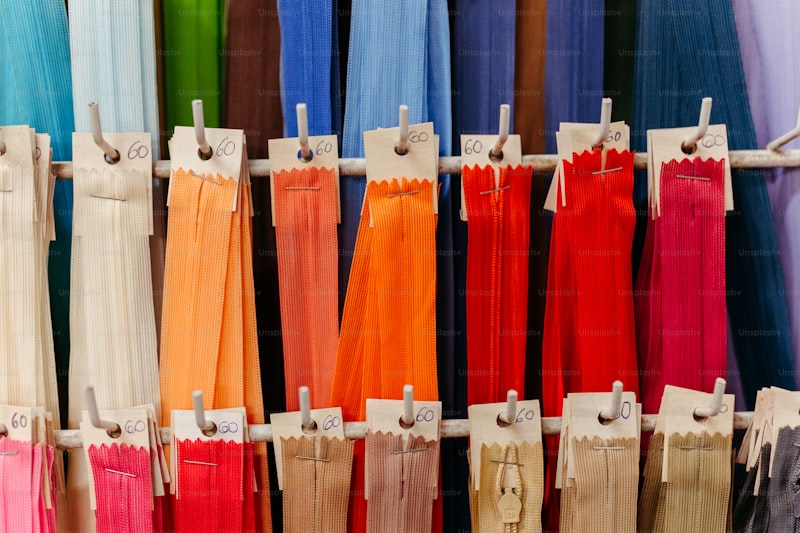The Role of Color Palettes in Dress Selection: Creating Stunning Outfits for Every Occasion
Understanding Color Palettes in Dress Selection
Choosing the perfect outfit can sometimes feel like solving a complex puzzle. Among the myriad of factors to consider, color palettes play a crucial role in influencing not only the overall look but also the mood and message that a dress conveys. From pastel hues perfect for spring to rich jewel tones suitable for winter, understanding how to select and pair colors is essential in creating a wardrobe that stands out.
What is a Color Palette?
A color palette refers to a collection of colors that are used together in design. This can apply to various aspects of fashion, from clothing to accessories, and even makeup. Selecting a cohesive color palette ensures that your outfits complement each other and can be mixed and matched effectively.
The Importance of Color Psychology
Color psychology is the study of how colors affect perceptions and behaviors. Different colors evoke different emotions and associations, which is vital knowledge for anyone looking to make a statement with their clothing choices. Here’s a quick overview of what certain colors communicate:
| Color | Emotion/Message |
| Red | Passion, energy, and excitement |
| Blue | Calmness, trust, and intelligence |
| Green | Growth, harmony, and freshness |
| Black | Elegance, power, and sophistication |
| Yellow | Happiness, optimism, and clarity |
Understanding these associations can help you choose a dress that not only looks good but also aligns with the message you want to communicate at an event.
Choosing the Right Color Palette for Various Occasions
When selecting a dress, it's essential to consider the occasion, as different settings may call for different color palettes. Here are some suggestions on how to decide:
1. Casual Gatherings
For informal events like a picnic or a friend's birthday party, go for vibrant colors that reflect joy and energy. Bright colors such as yellow and pink can uplift your outfit and mood. Mixing these shades with neutrals such as white or beige can provide balance.
2. Professional Settings
In the workplace or for professional networking, opt for color palettes that communicate confidence. Shades of blue, gray, and black are often safe bets for creating a polished look. You might want to incorporate a pop of color, such as a red accessory, to convey assertiveness and leadership.
3. Evening Events
For formal gatherings like weddings or gala events, rich jewel tones such as emerald green, deep purple, and royal blue can create a luxurious appearance. Combining these colors with gold or silver accents elevates the elegance of your outfit.
4. Seasonal Considerations
Another critical aspect to consider is the season. Lighter shades like light blue and pastel pink are perfect for spring, while vibrant and warm tones like oranges and reds resonate with the feeling of summer. As the leaves change, earthy tones such as mustard yellow and burgundy can reflect the beauty of fall. In winter, opt for dark colors like navy blue or black to provide sophistication and warmth.

Mixing and Matching Colors
After selecting a primary color palette, the next challenge is to mix and match different elements of your outfit. Here are some tips to consider:
1. Complementary Colors
Complementary colors are opposite each other on the color wheel. For example, blue and orange or red and green create high contrast and can make an outfit pop. When blended thoughtfully, these colors can create eye-catching ensembles.
2. Analogous Colors
Analogous colors are next to each other on the color wheel—think blue, green, and teal. These colors often provide a harmonious look and can be great for maintaining a cohesive appearance without overwhelming the senses.
3. Neutrals as a Base
Neutrals like black, white, gray, and beige can act as a foundation for any outfit. You can use these basic colors as a base to highlight brighter colors through your accessories or statement pieces.
Practical Tips for Dress Selection
As you embark on selecting your outfits based on color palettes, keep the following tips in mind:
1. Know Your Skin Tone
Your skin tone plays a vital role in determining which colors flatter you. Generally, individuals with warm undertones look better in earthy colors, while those with cool undertones shine in jewel tones.
2. Be Aware of Current Trends
Fashion constantly evolves, and staying updated with the latest color trends can enhance your wardrobe. Check popular fashion sites or magazines to discover which colors are currently in vogue.
3. Experiment and Have Fun
Don’t be afraid to experiment with colors outside your comfort zone. Mix and match different palettes, and you might discover unexpected combinations that work beautifully together.
Summary and Final Thoughts
In conclusion, the role of color palettes in dress selection is multi-faceted and essential for achieving a polished look suitable for any occasion. By understanding the importance of color psychology, considering the context of your event, and mastering the art of mixing and matching colors, you can enhance your personal style significantly.
Remember, fashion is a form of self-expression. Use color palettes to articulate who you are and how you wish to be perceived. So, next time you stand before your wardrobe, ready to select an outfit, take a moment to think about the colors that will best represent you. Happy dressing!